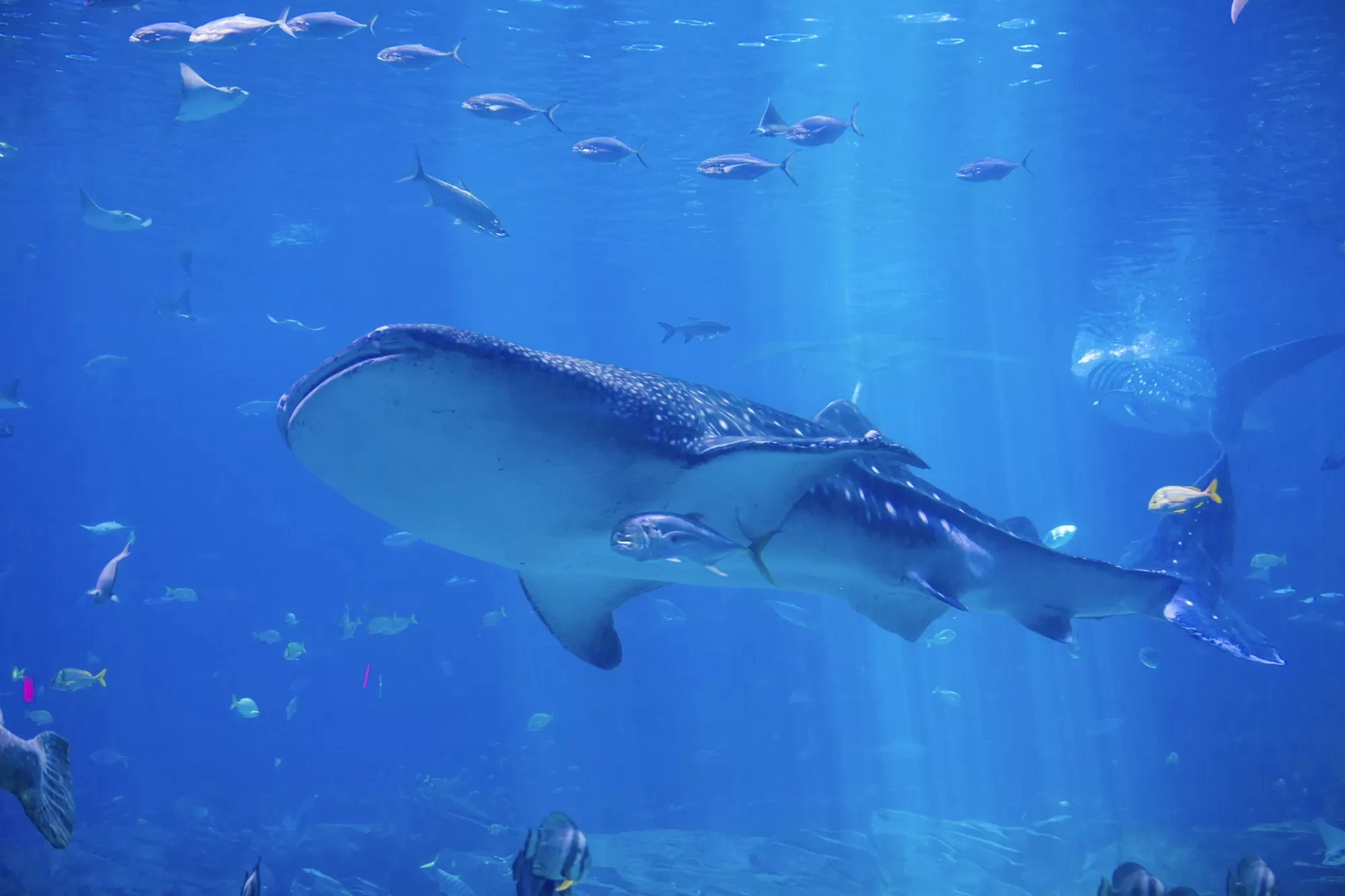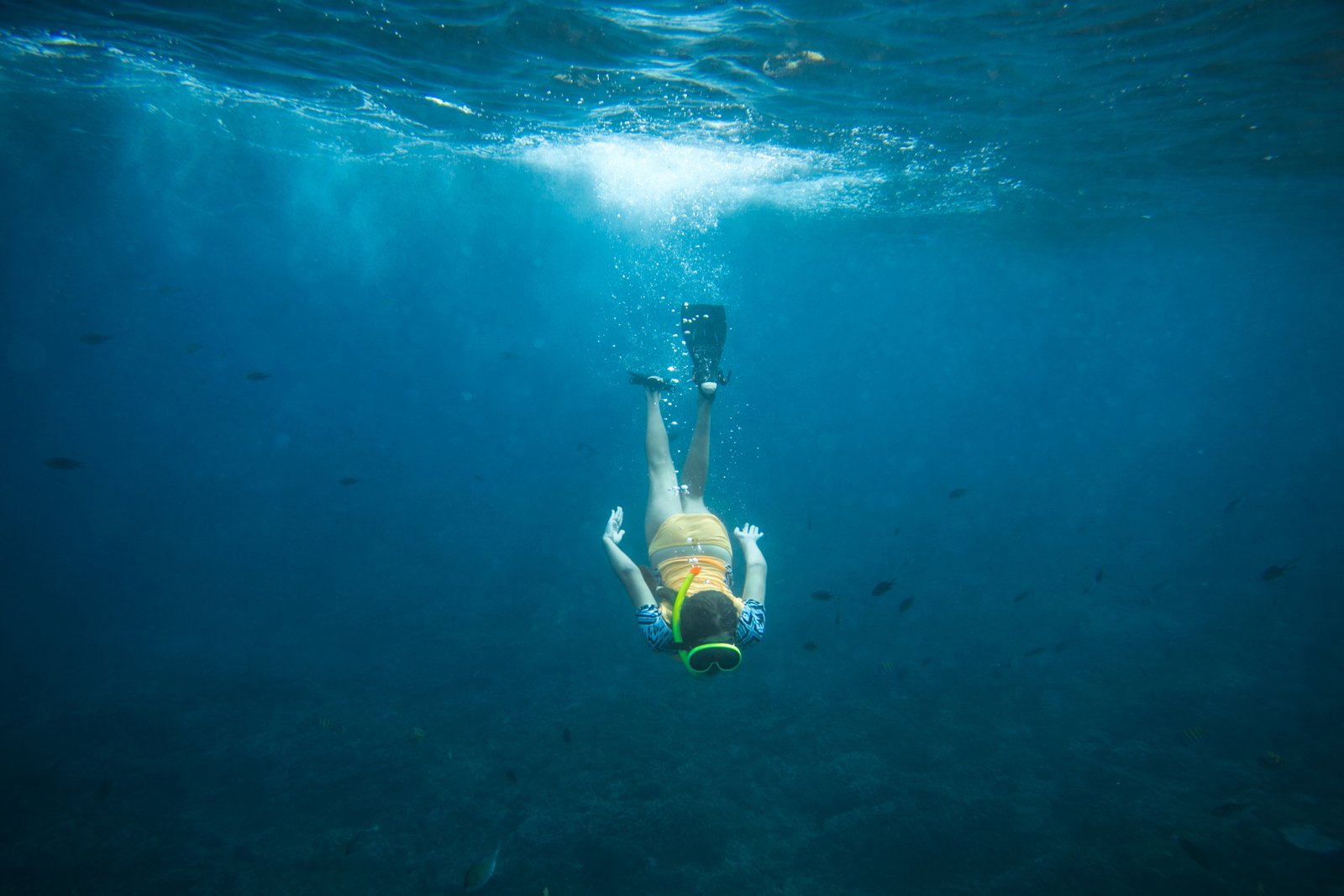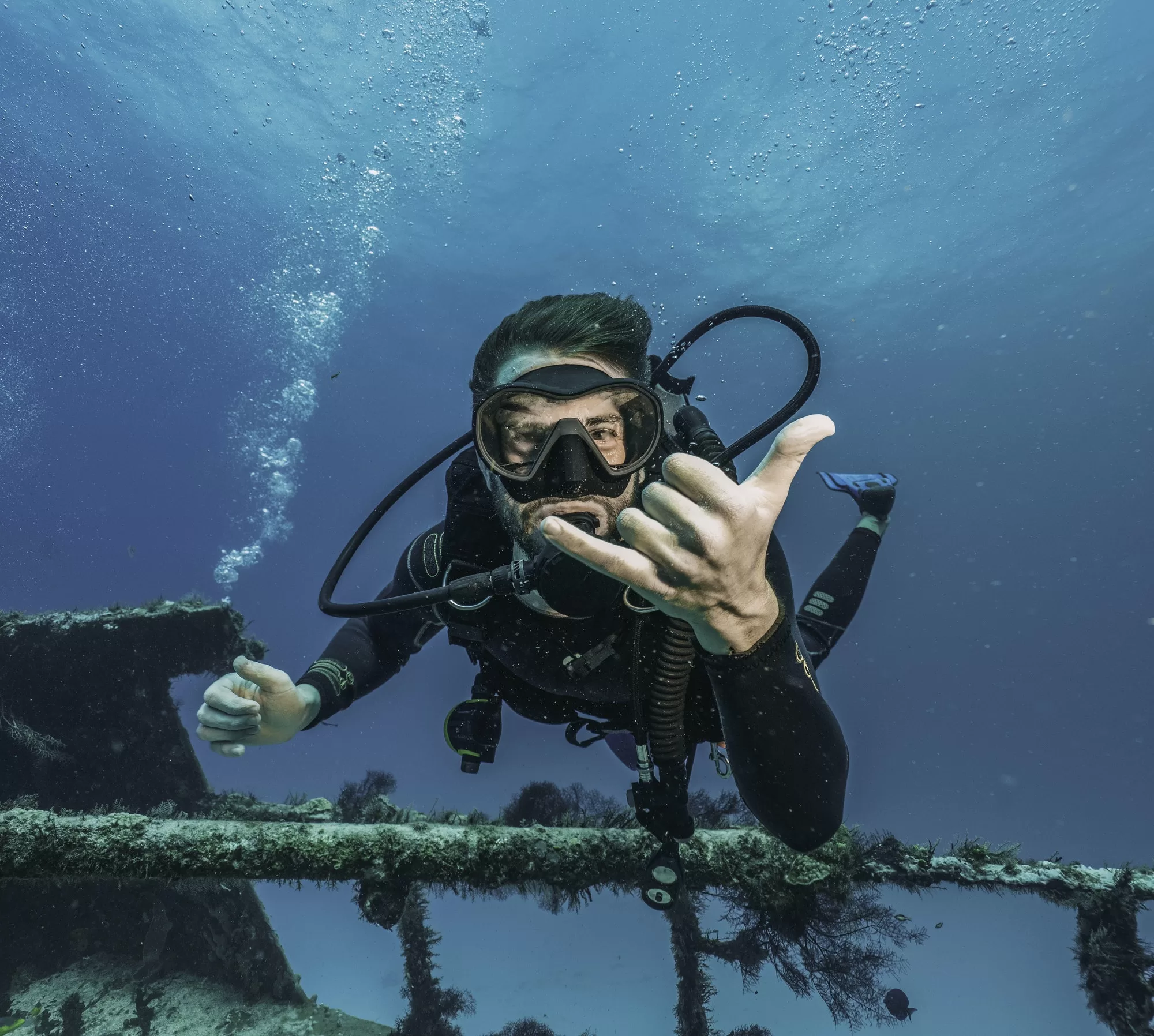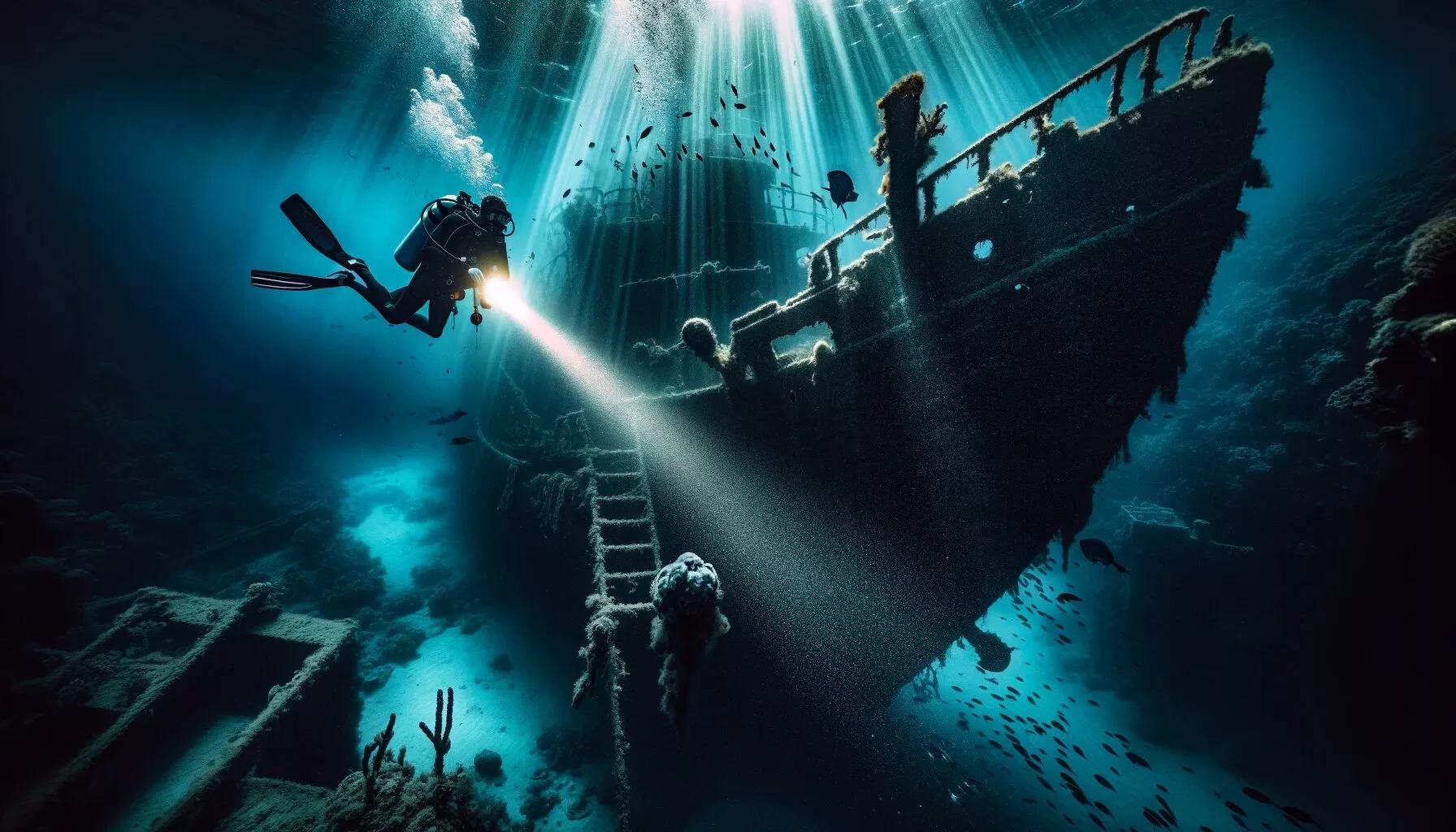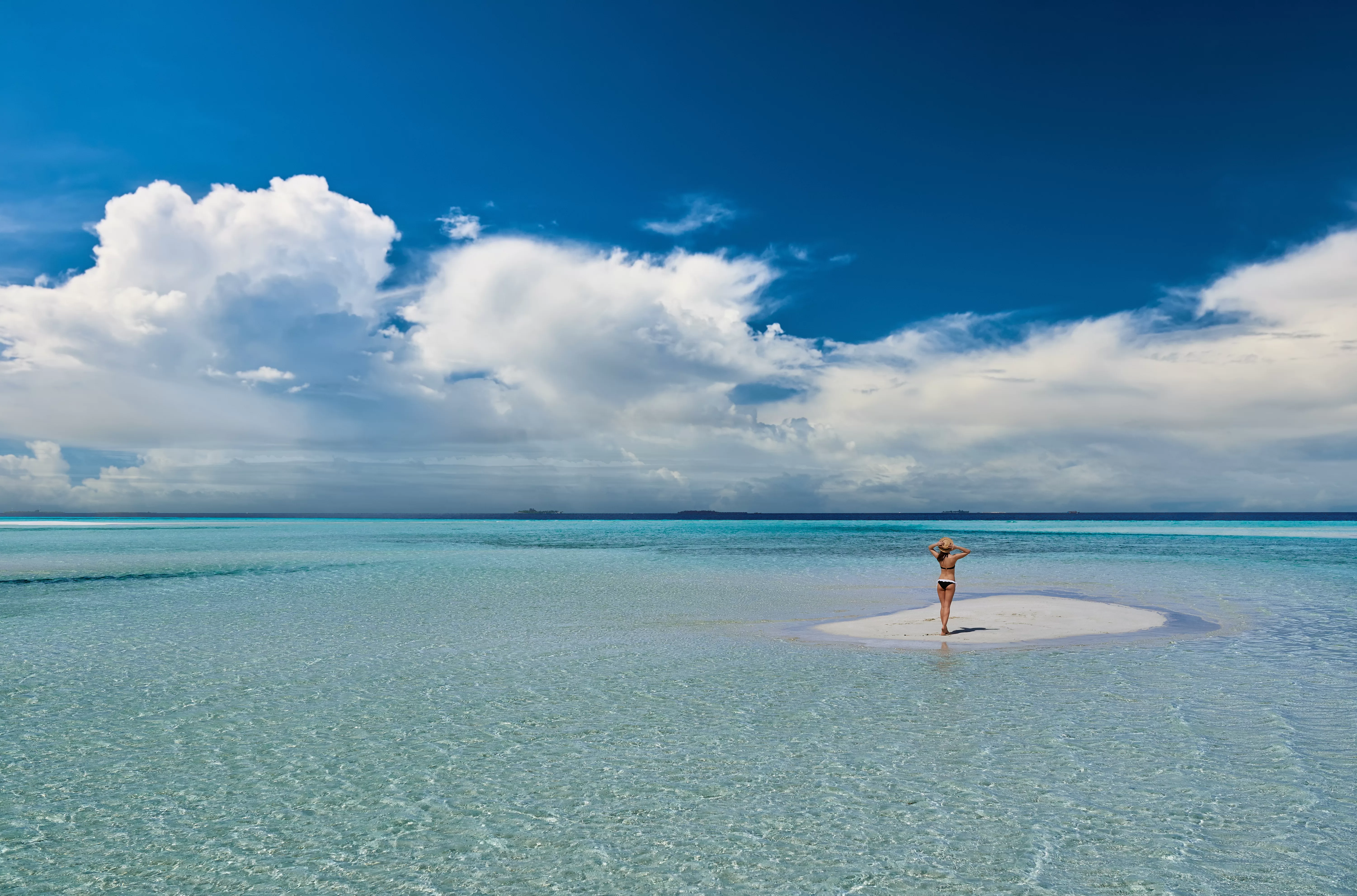Hey ocean lovers and diving enthusiasts! Get ready to dive into one of Australia’s most incredible underwater treasures – Ningaloo Reef. This World Heritage site is not just another tick on your dive list; it’s a marine wonderland where the star attraction is none other than the gentle giant of the sea – the whale shark. Whether you’re a seasoned diver or someone who just loves the ocean, Ningaloo offers an unparalleled aquatic adventure. Imagine gliding alongside the largest fish in the ocean in crystal-clear waters, surrounded by vibrant corals and a kaleidoscope of marine life. Let’s embark on this exhilarating journey and discover why Ningaloo Reef is a must-visit for every diver and marine enthusiast.
Ningaloo Reef: A Diver’s Paradise
Ningaloo Reef, stretching over 300 kilometers along the coast of Western Australia, is a vibrant underwater utopia. It’s one of those rare places where the reef meets the beach, making it easily accessible for all kinds of adventurers. Here, you’re not just visiting a dive site; you’re immersing yourself in an ecosystem teeming with life. From the tiniest of nudibranchs to the majestic manta rays, Ningaloo is a biodiversity hotspot.
But what truly sets Ningaloo apart is its thriving coral system. Unlike its more famous cousin, the Great Barrier Reef, Ningaloo offers an intimate reef experience where the vibrant corals are just a short swim from the shore. You’ll find over 250 species of corals and over 500 species of fish, creating a dazzling display of colors and forms. Whether you’re snorkeling just off the beach or diving in deeper waters, Ningaloo is a treasure trove of marine wonders waiting to be explored. So, gear up and prepare to be mesmerized by the underwater magic of Ningaloo Reef! 🐠🤿🌊
Whale Sharks of Ningaloo Reef
Ningaloo Reef is a sanctuary for the ocean’s gentle giants, the whale sharks. These majestic creatures, often referred to as the ‘polka-dotted behemoths’, grace the waters of Ningaloo, turning it into a dream destination for divers and snorkelers.
Characteristics of Whale Sharks Found in Ningaloo
- Size and Appearance: Whale sharks at Ningaloo can reach lengths of up to 12 meters. Their distinctive pattern of white spots and stripes makes them easily recognizable.
- Behavior: Known for their docile nature, whale sharks at Ningaloo are often seen serenely gliding through the water, filter-feeding on plankton and small fish.
- Interaction with Divers: These giants are known for being unfazed by human presence, often allowing divers to swim alongside them at a respectful distance.
Best Times to Dive with Whale Sharks
- Optimal Season: The best time to dive with whale sharks at Ningaloo Reef is from late March to early August, aligning with their migratory patterns.
- Peak Encounters: April to July is often considered the peak season for whale shark encounters, offering higher chances of sightings and interaction.
Preparing for Your Whale Shark Dive
Diving with whale sharks is an exhilarating experience that requires proper preparation and gear. Whether it’s your first time or you’re a seasoned diver, being well-prepared enhances the experience.
Essential Gear and Preparations for Diving with Whale Sharks
- Snorkeling vs Diving Gear: Depending on your choice of snorkeling or scuba diving, ensure you have the right equipment. This includes masks, snorkels, fins, and for divers, a BCD, regulators, and a wetsuit.
- Underwater Camera: A must-have to capture your encounter, preferably with a waterproof housing suitable for the depth.
- Safety Equipment: A whistle, surface marker buoy, and GPS device can be crucial for safety, especially in open waters.
Tips for First-Time and Experienced Divers
- Respectful Distance: Always maintain a safe and respectful distance from the whale sharks to avoid disturbing them.
- Be Calm and Patient: Whale sharks are gentle, so approach them calmly and patiently for a serene experience.
- Listen to Your Guide: Follow the instructions of your dive guide to ensure a safe and respectful encounter with these majestic creatures.
Diving Sites at Ningaloo Reef
Ningaloo Reef boasts a plethora of dive sites, each offering its own unique underwater spectacle. Apart from the famous whale shark spots, the reef is home to a variety of sites that cater to divers of all levels.
Overview of Popular Dive Sites Apart from Whale Shark Spots
- Turquoise Bay: Renowned for its drift dives, this site is perfect for those who enjoy being gently swept along vibrant coral formations teeming with marine life.
- The Navy Pier: Rated as one of the world’s top shore dives, it is a haven for macro photographers and those intrigued by the smaller critters of the ocean.
- Lighthouse Bay: Ideal for advanced divers, this area offers a chance to encounter manta rays, reef sharks, and large schools of fish.
What Makes Each Dive Site Unique
- Turquoise Bay’s Coral Diversity: Home to an astonishing array of hard and soft corals, it’s a kaleidoscope of colors and shapes.
- The Navy Pier’s Macro Life: Offering sightings of rare and unusual species like nudibranchs, frogfish, and octopus.
- Lighthouse Bay’s Big Fish Encounters: Known for adrenaline-pumping encounters with larger marine species in deeper waters.
Ethical Interaction with Whale Sharks
Diving with whale sharks is an awe-inspiring experience, and it’s vital to approach these encounters with respect and awareness of conservation principles.
Guidelines for Responsible and Respectful Whale Shark Encounters
- Maintain a Safe Distance: Keep a minimum distance of 3 meters from the head and 4 meters from the tail to avoid distressing the whale shark.
- Avoid Touching: Touching or riding whale sharks can harm their skin and alter their natural behavior.
- Minimize Environmental Impact: Be conscious of your movements to avoid damaging the surrounding coral and marine habitat.
Importance of Conservation and Sustainable Practices
- Educational Value: Understanding the role of whale sharks in the marine ecosystem highlights the importance of conservation efforts.
- Promoting Sustainable Tourism: By adhering to ethical practices, divers contribute to sustainable tourism that supports local communities and the environment.
- Long-Term Preservation: Responsible diving practices ensure that these magnificent creatures continue to thrive for future generations to experience.
Beyond Whale Sharks: Other Ningaloo Wonders
Discover the Hidden Gems of Ningaloo Reef
Ningaloo Reef, a biodiversity hotspot, offers much more than just whale shark encounters. Its rich marine ecosystem is a playground for divers and snorkelers, eager to explore its underwater treasures.
Highlighting Other Marine Life Encounters at Ningaloo Reef
- Manta Rays: The graceful ballet of manta rays is a sight to behold, especially around Coral Bay and the outer reef.
- Turtles and Dolphins: Ningaloo is home to several turtle species and playful dolphins, often seen frolicking near the reef.
- Colorful Coral Gardens: The reef is adorned with an array of vibrant corals, housing a multitude of small reef fish and invertebrates.
Seasonal Variations and What to Expect
- Winter (June-August): This season brings clearer waters and the chance to see humpback whales migrating along the coast.
- Summer (December-February): Warmer waters during these months attract a different array of marine life, including baby turtles hatching on the beaches.
Planning Your Ningaloo Adventure
Your Ultimate Guide to a Ningaloo Reef Dive Trip
Planning a dive trip to Ningaloo Reef is an exciting venture. Knowing the best times to visit and where to stay can enhance your experience manifold.
Best Times of Year for Diving at Ningaloo Reef
- Whale Shark Season (March-July): Ideal for those aiming to swim with whale sharks. The water temperatures and visibility are perfect for diving.
- Year-Round Diving: Ningaloo Reef offers excellent diving conditions throughout the year, with each season bringing its unique attractions.
Accommodation and Travel Tips for Divers
- Accommodation Options: From luxury resorts to budget-friendly hostels, Ningaloo caters to all preferences. Many places offer dive packages and gear rentals.
- Getting There: The closest airport is in Learmonth, with regular shuttle services to Ningaloo. For a road trip, drive from Perth to Ningaloo, enjoying the scenic route.
- Local Transportation: Renting a car is recommended for flexibility in exploring the region. Dive shops often provide transport to dive sites.
- Booking in Advance: Especially during peak season, it’s wise to book your accommodation and dive tours in advance to secure the best spots.
Protecting Ningaloo Reef: A Diver’s Responsibility
As divers and ocean enthusiasts, we play a crucial role in the conservation of Ningaloo Reef. This natural wonder faces various threats, and our actions can significantly impact its future.
Discussing the Role of Divers in Protecting Ningaloo Reef
- Responsible Diving Practices: Adhering to eco-friendly diving practices to minimize impact on the reef and its inhabitants.
- Awareness and Education: Educating ourselves and others about the reef’s ecosystem and the importance of preserving it.
Conservation Initiatives and How to Get Involved
- Supporting Local Conservation Projects: Engaging with local organizations that work towards the conservation of Ningaloo Reef.
- Participation in Research and Citizen Science: Contributing to research projects and citizen science initiatives that help in understanding and protecting the reef.
FAQ Section
Your Questions About Diving with Whale Sharks and Ningaloo Reef Answered
Q: When is the best time to see whale sharks at Ningaloo Reef?
A: The best time to see whale sharks at Ningaloo Reef is typically between March and July.
Q: Do I need any special qualifications to dive with whale sharks?
A: While no special qualifications are needed for snorkeling with whale sharks, being a certified diver is recommended for scuba diving.
Q: What other marine life can I see at Ningaloo Reef?
A: Along with whale sharks, you can encounter manta rays, turtles, dolphins, and a variety of fish and coral species.
Q: How can divers help protect Ningaloo Reef?
A: Divers can help by practicing responsible diving, not touching or disturbing marine life, and supporting conservation efforts.
Q: Are there any specific rules or regulations for diving at Ningaloo Reef?
A: Yes, there are regulations to ensure the safety of both the divers and the marine life, including distance rules from marine creatures.
Embracing the Underwater Marvels of Ningaloo Reef
As we conclude our journey through Ningaloo Reef, it’s clear that this extraordinary destination offers more than just a dive – it’s an immersive experience into a vibrant underwater world. Diving with the whale sharks, exploring the rich coral gardens, and encountering the diverse marine life make Ningaloo a bucket-list destination for any diver. But with these incredible experiences comes a responsibility to protect and preserve this natural wonder. As we reflect on the awe-inspiring moments spent at Ningaloo, let us carry forward the message of conservation and sustainable diving practices. Ningaloo Reef isn’t just a dive site; it’s a testament to the beauty and fragility of our oceans, deserving of our utmost respect and protection. Let’s dive, explore, and commit to being guardians of this underwater paradise.
